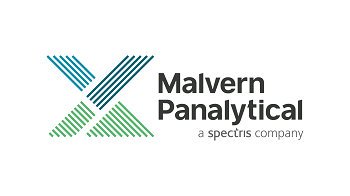One of the most popular and widely researched type of nanoparticles are gold nanoparticles. The term “gold nanoparticles” in Google Scholar throws up more than 500,000 hits. These gold nanoparticles are used for different applications ranging from the biological to the material, and include drug delivery, nanomedicine, cancer diagnostics, biological scaffolds, biosensors, catalysts, contrast agents, and CMP slurries for manufacturing microprocessors [1].
Gold nanoparticles’ compatibility with a variety of surface chemistries as well as their versatile optical properties and well-studied synthesis and preparation makes them suitable for such wide-ranging applications.
Transmission or scanning electron microscopy (TEM/SEM), Ultra Violet-Visible absorbance (UV-Vis), and dynamic light scattering (DLS) are common characterization tools. These tools provide a considerable amount of information.
For instance, UV-Vis can be used to measure shifts in the surface plasmon resonance absorbance to monitor the state of surface conjugation and aggregation, but offers little direct information regarding particle size. SEM and TEM can deliver high resolution images for shape and size determination, but they involve extensive sample preparation and cannot analyze particles in suspension.
While DLS is a ubiquitous method that enables rapid measurement of particle size, it cannot measure particle concentration and does not have the required resolution to determine multiple groups of similarly-sized particles. Although these are important characterization tools, they have certain limitations because they cannot provide particle concentrations or high resolution size distributions of colloidal particles in solution.
Background
Nanoparticle Tracking Analysis (NTA) obtains the particle size distribution of samples in liquid suspension by utilizing the properties of both Brownian motion and light scattering. When the particles in suspension are exposed to a laser beam passing through the sample chamber, they scatter light in such a way that they can be easily seen through a 20x magnification microscope.
The camera mounted on this microscope operates at roughly 30 fps and captures the video of the particles moving under Brownian motion within the field of view of roughly 100 x 80 x 10 µm.
The particles’ movement is captured on a frame-by-frame basis. The center of each observed particle is simultaneously identified and tracked by the proprietary NTA software to determine the average distance traveled by each particle in the x and y planes.
This value makes it possible to determine the particle diffusion coefficient from which, if the solvent viscosity and sample temperature values are known, the particles’ sphere-equivalent hydrodynamic diameter can be determined using the Stokes-Einstein equation.
Additionally, the movement of the particles is calculated within a fixed field of view (roughly 100 µm by 80 µm) irradiated by a beam of 10 µm in depth. These figures help to estimate the sample’s scattering volume by measuring the particles’ concentration within this field of view and extrapolating to a larger volume to estimate the concentration of particles per mL for an overall total or any give size class.
Therefore, NTA can be used as a fast and routine characterization tool. It has the sensitivity to identify size differences before and after adjusting surface chemistry, and the resolution to differentiate between multiple groups of similarly-sized particles. This technique directly counts particles to provide nanoparticle dosimetry in therapeutic applications.
References
[1] Marie-Christine Daniel and Didier Astruc. Gold Nanoparticles: Assembly, Supramolecular Chemistry, Quantum-Size-Related Properties, and Applications toward Biology, Catalysis, and Nanotechnology. Chem. Rev. 2004, 104, 1, 293–346.
[2] Jonathan G. Mehtala and Alexander Wei. Nanometric Resolution in the Hydrodynamic Size Analysis of Ligand-Stabilized Gold Nanorods. Langmuir 2014, 30, 13737-13743.
[3] Xiaju Cheng, Xin Tian, Anqing Wu, Jianxiang Li, Jian Tian, Yu Chong, Zhifang Chai, Yuliang Zhao ,Chunying Chen, and Cuicui Ge. Protein Corona Influences Cellular Uptake of Gold Nanoparticles by Phagocytic and Nonphagocytic Cells in a Size-Dependent Manner. ACS Appl. Mater. Interfaces 2015, 7, 20568–20575.
[4] Martin Lundqvist, Johannes Stigler, Giuliano Elia, Iseult Lynch, Tommy Cedervall, Kenneth A. Dawson. Nanoparticle size and surface properties determine the protein corona with possible implications for biological impacts. PNAS 2008, 105, 14265–14270.
[5] Andre E. James and Jeremy D. Driskell. Monitoring gold nanoparticle conjugation and analysis of biomolecular binding with nanoparticle tracking analysis (NTA) and dynamic light scattering (DLS). Analyst 2013, 138, 1212-1218.
[6] Joel M Cohen, Justin G Teeguarden, and Philip Demokritou. An integrated approach for the in vitro dosimetry of engineered nanomaterials. Particle and Fibre Toxicology. 2014. 11:20.
[7] Glen M. DeLoid, Joel M. Cohen, Georgios Pyrgiotakis, Sandra V. Pirela, Anoop Pal, Jiying Liu, Jelena Srebric, and Philip Demokritou. Advanced computational modeling for in vitro nanomaterial dosimetry. Particle and Fibre Toxicology. 2015. 12:32.
[8] Dorota Bartczak, Phil Vincent, and Heidi Goenaga-Infante. Determination of Size- and Number-Based Concentration of Silica Nanoparticles in a Complex Biological Matrix by Online Techniques. Anal. Chem. 2015, 87, 5482–5485.

This information has been sourced, reviewed and adapted from materials provided by Malvern Panalytical.
For more information please visit Malvern Panalytical.